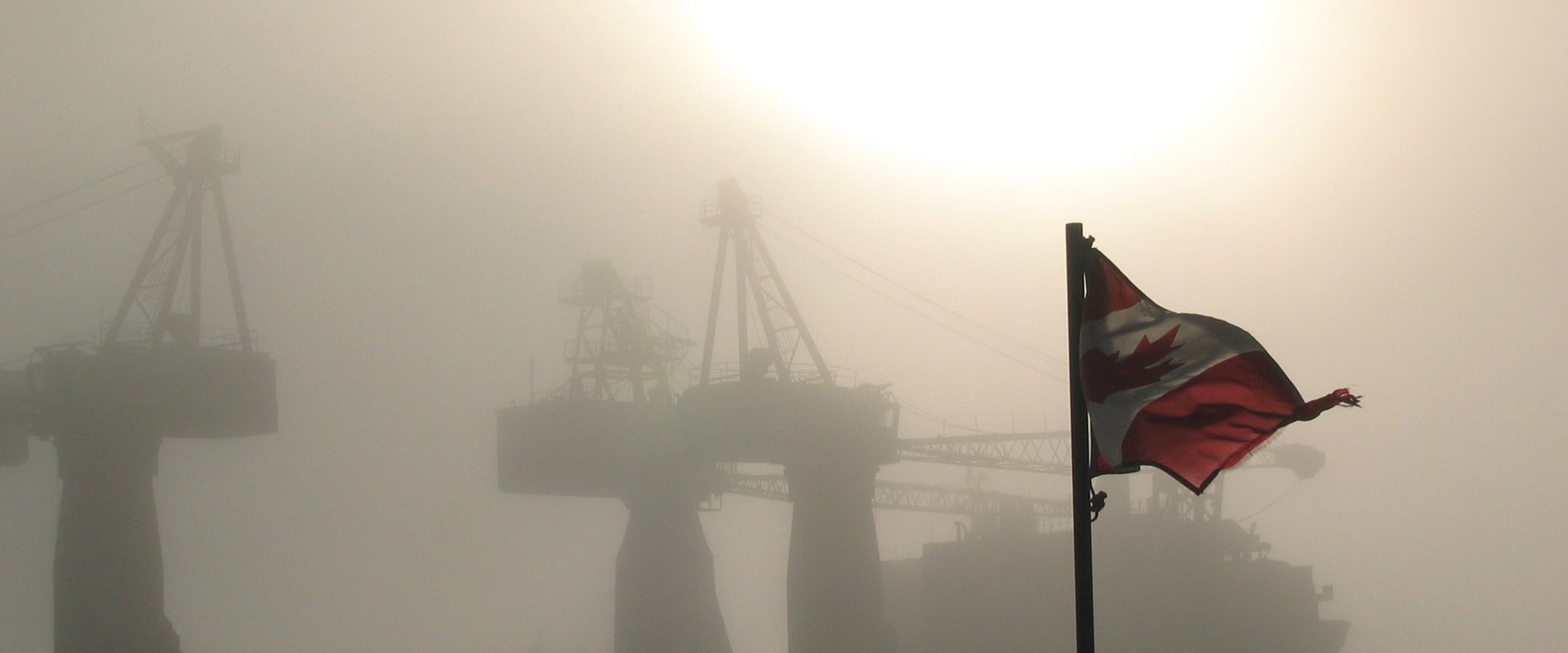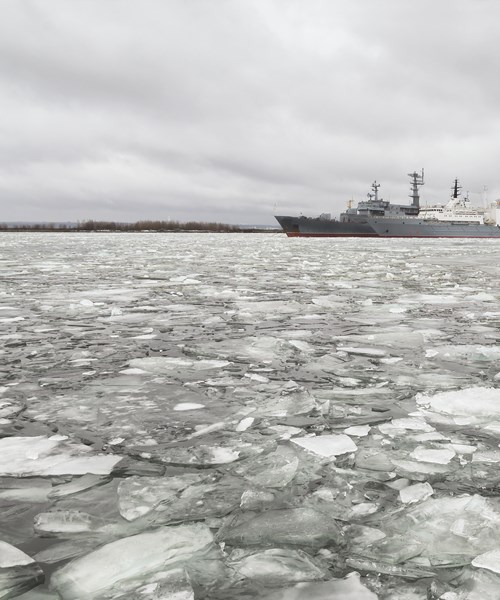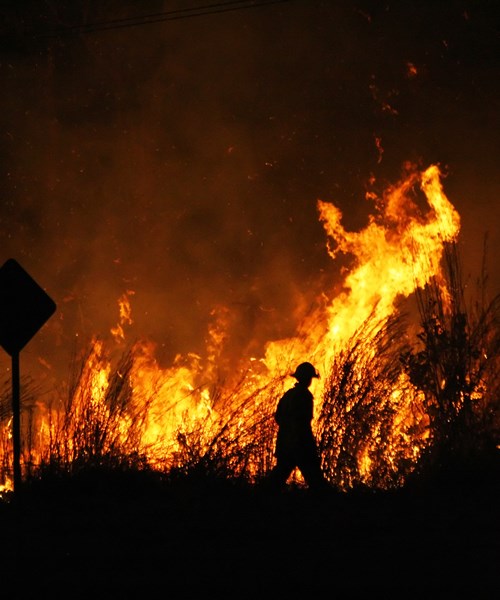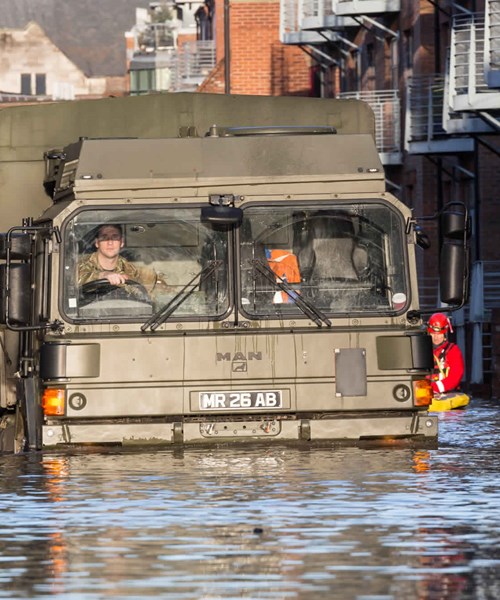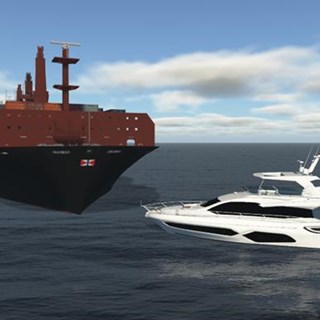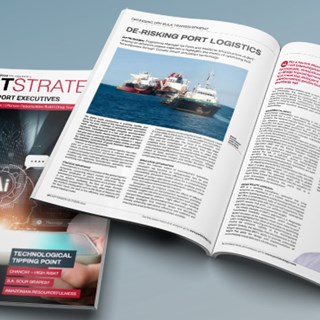The approach and response to climate change for the Canadian Department of National Defence (DND) and Canadian Armed Forces (CAF) are currently embedded in its Defence Energy and Environment Strategy 2020-2023 [DEES].
In Canada alone, defence manages approximately 2.1 million hectares of land and 20,000 buildings and operates and trains over large sea, land, and airspace domestically and internationally.
In response, the DEES acknowledges the responsibility of defence to show leadership in environmental and energy sustainability and an obligation to manage assets and operations efficiently.
The DEES outlines three key objectives, two of which are directly relevant to climate change:
- Less energy waste and cleaner energy: Reduce the energy demand for defence by ensuring systems and processes are in place to measure performance; increase energy efficiency and conservation measures in all aspects of the defence business; and move to lower emission and more sustainable energy sources, such as hydro, wind and solar.
- Reduce climate change risks: Assess the risk to defence programs, critical infrastructure, operational and non-operational activities, and training to ensure we are ready to adapt to the changing climate.
- Reduce defence environmental footprint: Reduce impacts to land, air and water from the infrastructure portfolio, commercial and operational fleets, and equipment.
Concerning objective 1, DND has set some clear targets for decarbonisation, including:
- TARGET 1 - Reduce greenhouse gas emissions by 40% below 2005 levels by 2025 and achieve net-zero emissions by 2050
- TARGET 2 - Use 100% clean electricity by 2022, where available, and by 2025 at the latest by producing or purchasing renewable electricity
- TARGET 3 - Assess 75% of eligible bases or wings for an Energy Performance Contract (EPC) and move 50% to the implementation phase by 2023
- TARGET 4 - Revise the Green Building Directive to include construction, renovation and demolition waste, net-zero, and available industry standards on embedded carbon requirements by 2021
- TARGET 5 - Develop net-zero carbon ready designs for two residential building archetypes by 2023
- TARGET 6 - 100% of DND commercial light-duty vehicle fleet purchases will be zero-emission vehicles (ZEVs) or hybrid when available, with a ZEV procurement target of 50% by 2023
- TARGET 7 - Develop a strategy for aviation fuels that supports the Government of Canada’s goal of achieving net-zero GHG emissions by 2050
- TARGET 8 - Complete baseline energy and fuel usage evaluations for select marine vessels by 2023
- TARGET 9 - Achieve an energy efficiency of 85% for fossil-fuel electrical generation and distribution utilities in major deployed camps by 2023
As outlined in the DEES 2020-2021 ‘Results’ document, action is progressing on many of these targets.
In objective 2, given the impacts of a changing climate on infrastructure, operations and personnel safety, the Strategy also recognises the imperative of better climate resilience and adaptation.
Targets 10 and 11 of the DEES seek to address objective two and are related to building climate resilience and treating identified physical climate risks through adaptation:
- TARGET 10 - Develop an adaptation risk assessment framework and assess DND programs as well as priority-based critical infrastructure by 2023
- TARGET 11 - Assess the impacts of climate change on RCN, CA and RCAF activities by 2023
The DEES notes that the risk assessment framework will be implemented by reviewing existing policy and practice across the department and CAF, and identifying key areas where climate change can have an impact. Once identified, climate change adaptation measures will be included in key policies and practices. Through this work, Defence will be able to anticipate and better understand the impacts of climate change, leading to the possibility of more detailed site-based climate risk assessments and adaptation plans for bases, infrastructure and training areas.
While the above relates to matters that are primarily internal of defence as an organisation, the DEES recognises that climate change has emerged as a threat multiplier that knows no borders, potentially affecting the frequency, scale, and complexity of future missions and is contributing to the complexity of the global security environment.
Given Canada’s location, the Arctic region is critical as ‘the international crossroads where issues of climate change, international trade, and global security meet’.
With climate-induced warming leading to more widespread sea-ice-free conditions in the Arctic and Atlantic Oceans, combined with technological call advancements, these conditions are leading to increased activity in the Arctic that changes safety and security demands.
Finally, as we have seen over the past 18 months, climate change significantly affects the frequency, duration and intensity of many climate-related hazards across the nation. This includes significant floods, wildfires, extreme heat, droughts and other extreme weather events that threaten the safety of Canadians and the fundamental functioning of infrastructure and service delivery.
It is increasingly being recognised that defence must maintain the capacity to respond to these emergencies, including engaging in rapid disaster response and contributing to effective search and rescue operations when needed.
As the DEES enters its mid-term in 2022, these are just some of the challenges associated with climate as an increasingly important issue for DND and CAF.
